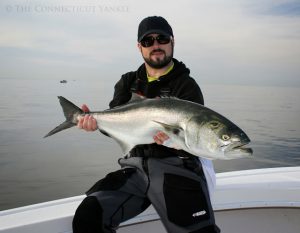
Since the 1700s, Long Island Sound’s marine life has endured dams, habitat loss, pollution, and overfishing. Vast schools of forage fish and abundant oyster reefs, marshes, and eel grass beds provided food and habitat for millions of striped bass, bluefish, and Atlantic salmon. Whales, seals and bald eagles also took part in the bounty. Rivers ran free into the Sound, carrying nutrients to the saltwater and allowing migrating fish to reach their freshwater spawning grounds.
As recently as 40 years ago, millions of river herring and menhaden still swam our region’s coastal rivers. Now Long Island Sound’s forage fish number only a few hundred thousand and cold-water species like lobsters have collapsed. Without clean water, access to river and marsh habitat, and strong stocks of smaller fish, marine life will not thrive in the Sound’s waters.
Restoring our region’s fisheries requires:
- Removing dams and barriers that prevent fish from traveling upriver to breeding waters.
- Strong, sensible management practices that regulate fishing and allow stocks to rebuild—from the bottom of the food web to the top.
- Connecticut, New York, and the upstream states whose rivers flow to the Sound working together to improve water quality.
With your help, Save the Sound is advancing all three of these objectives.
Restoring Habitat
Save the Sound has restored fish passage on the West River, Quinnipiac River, Whitford Brook, Noroton River, and Pequonnock River. Our marsh and dune restoration efforts have transformed coastal habitats at Sunken Meadow State Park, Rocky Neck State Park, and more.
And we have more on the way! With your support, we can re-open more rivers and marshes so fish have even greater access to inland breeding areas. Learn more about our Habitat Restoration projects here.
Managing for Abundant Fisheries
Fishermen, recreational or commercial, are deeply passionate about properly managing the water resources they enjoy or making their living on. We look for ways to sustainably grow our region’s fishing industries and bring a new generation of watermen to the conservation discussion.
Because fish swim across state borders, the best way to protect them is with strong federal and regional policy. The Magnuson-Stevens Act, which established regional fisheries councils and allows the federal government to set catch limits, is currently awaiting re-authorization by Congress.
By linking with hundreds of conservation and angler groups from Georgia to Maine, we can protect forage fish like herring and menhaden, help restore thriving stocks of larger game fish like seabass, and boost recreational and commercial fishing opportunities. Join the effort.
Improving Water Quality
Fish need clean water to survive and thrive. Working to reduce excess nutrients in the water so fish can breathe and spawn successfully is a top priority for Save the Sound. Check out our Nitrogen Campaign for information on the impacts to wildlife and what you can do to help reduce nitrogen loading to the Sound.
Garbage in the water is another serious threat to marine wildlife. To help us keep a lid on debris entering the Sound, join one of our Coastal Cleanups or organize your own!
